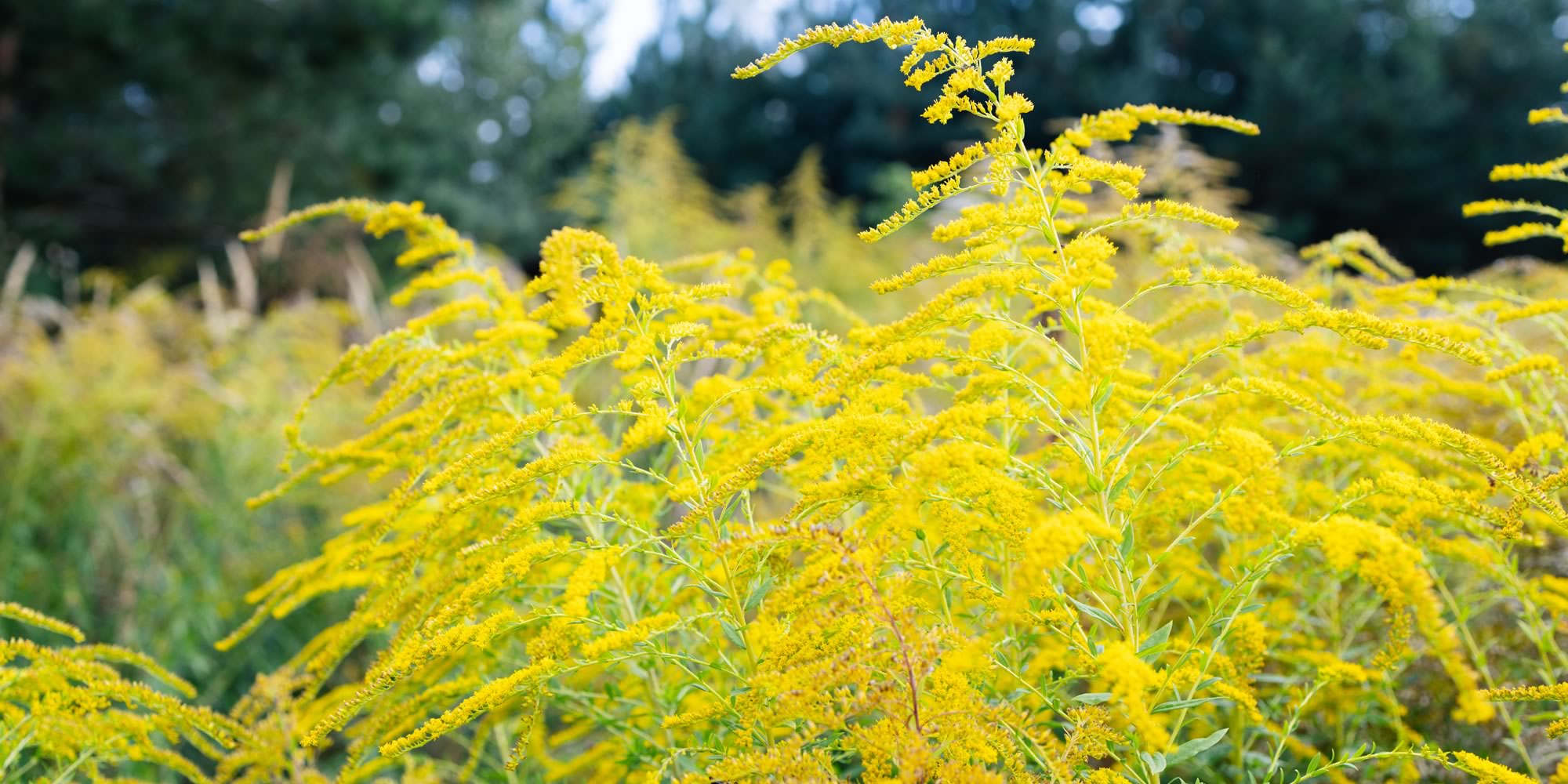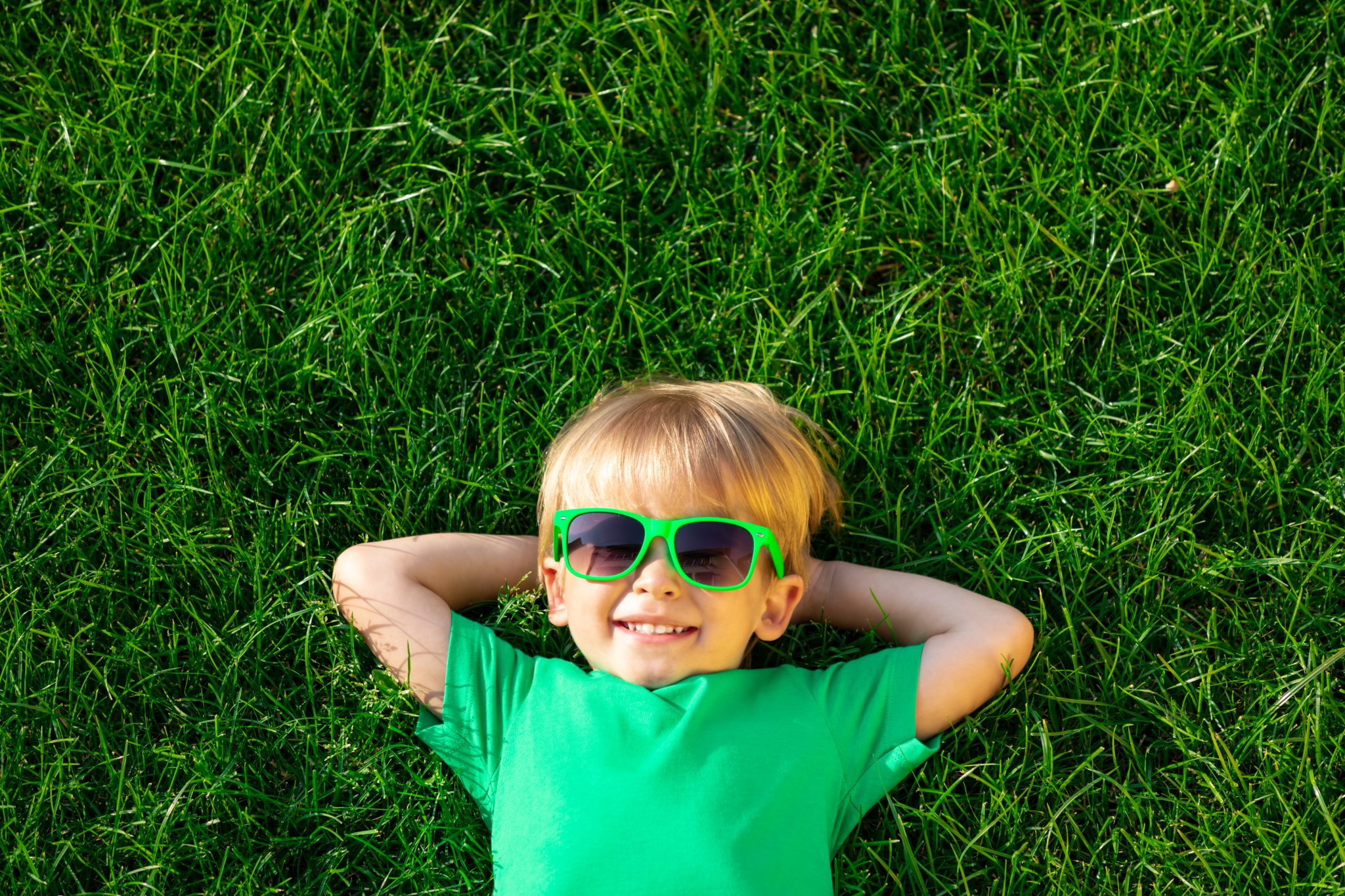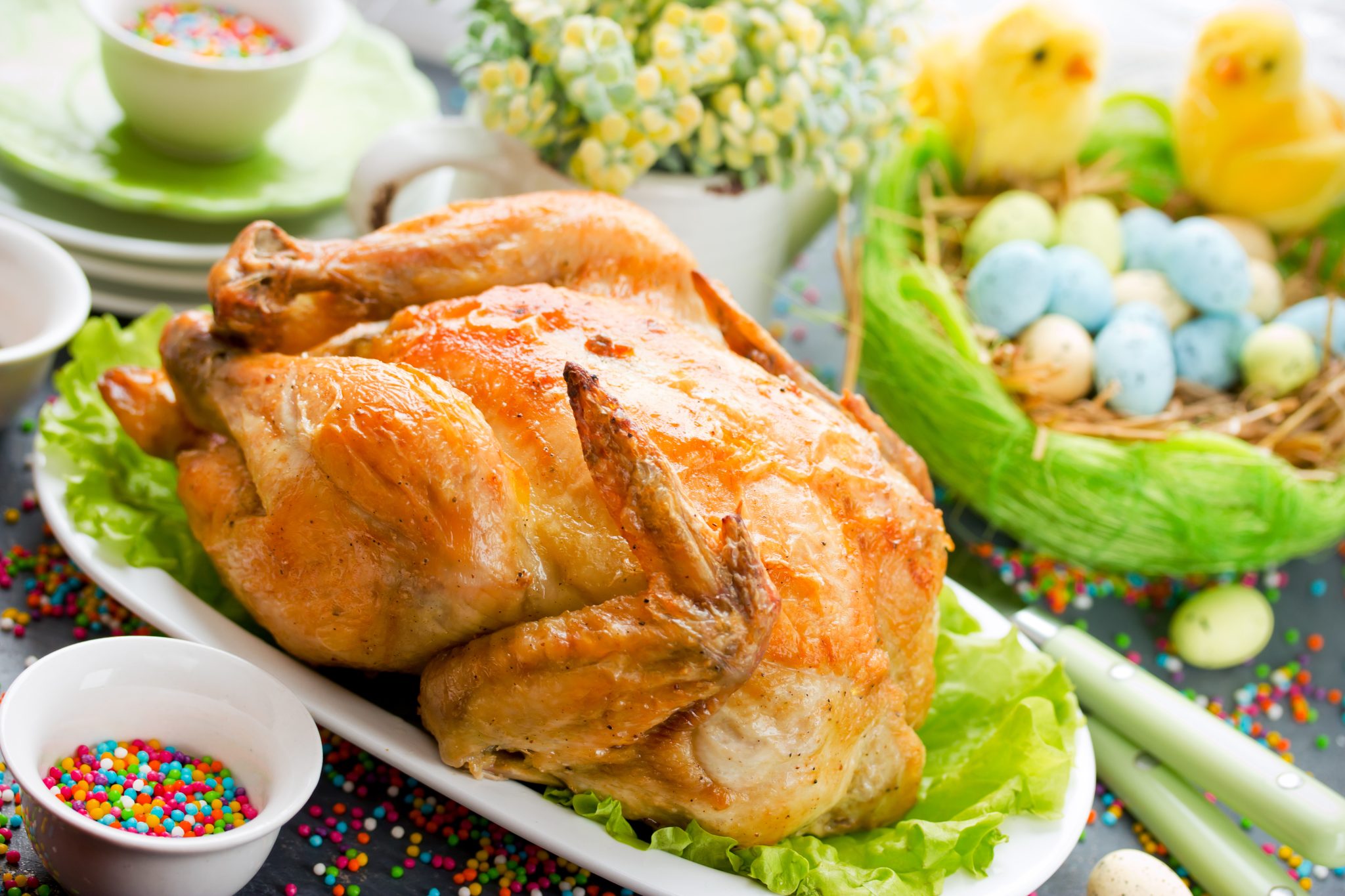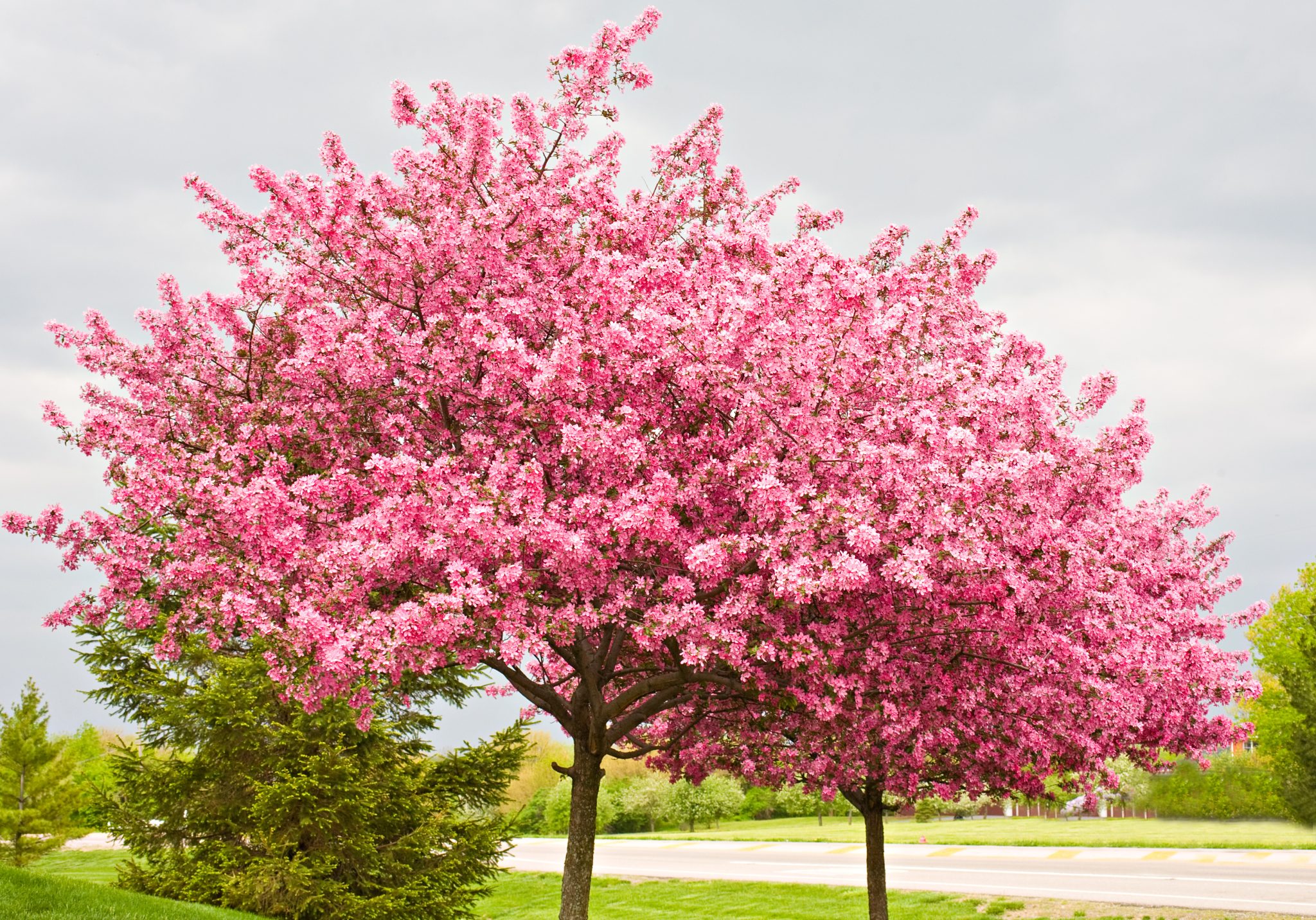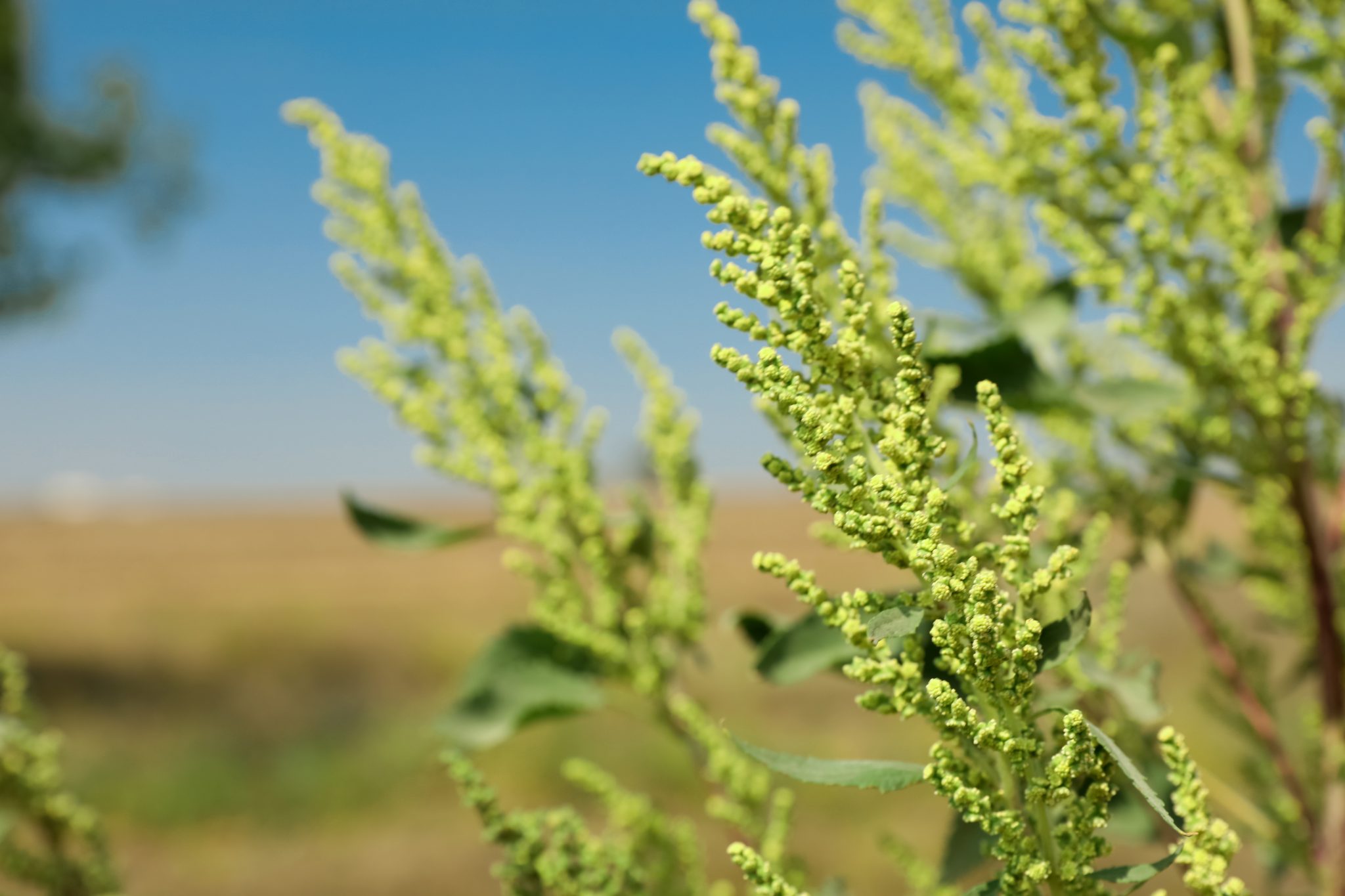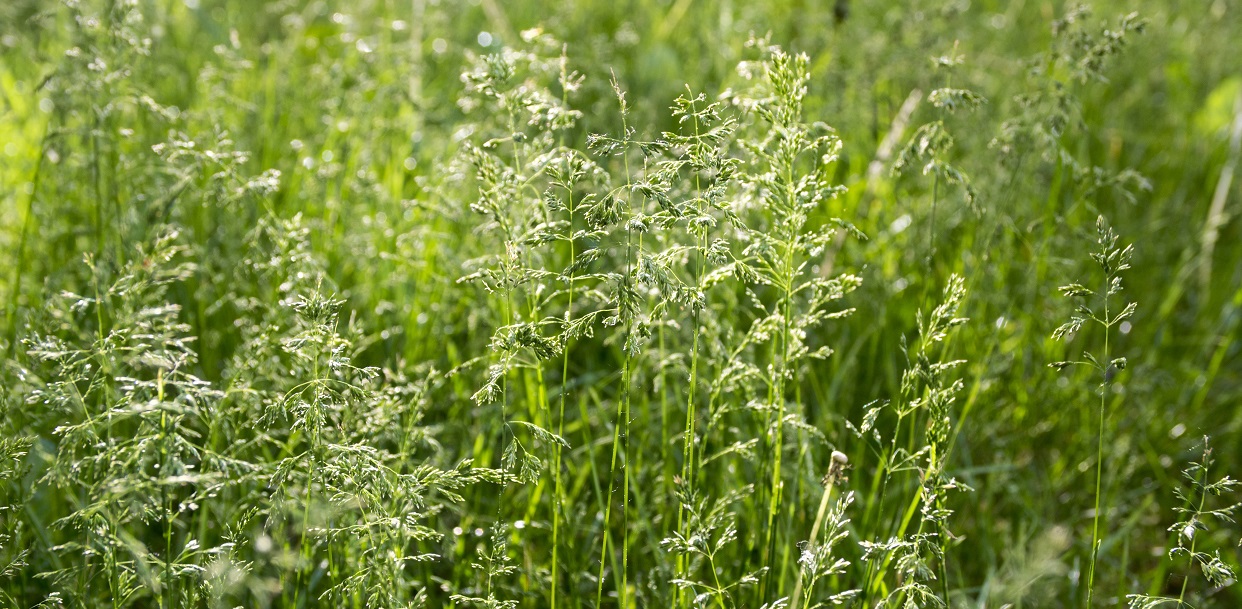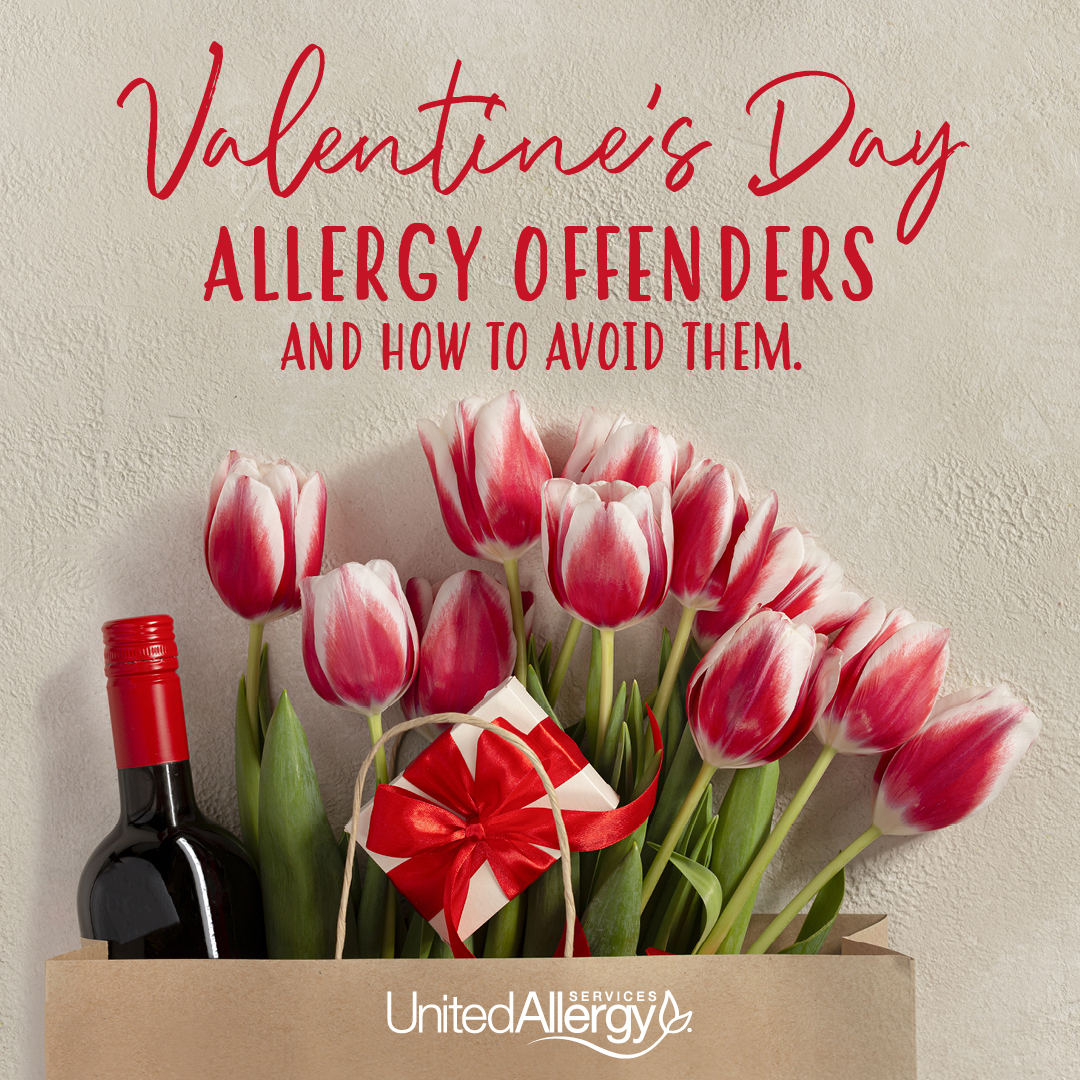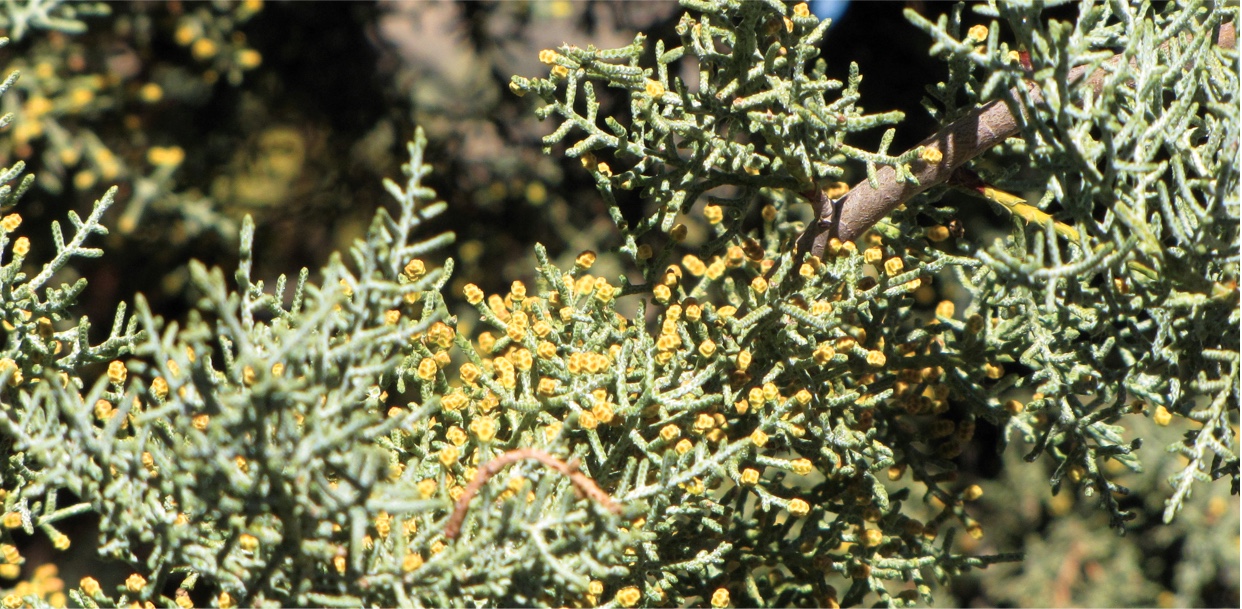Rising Ragweed Pollen: Why Fall Allergies in the U.S. Are Getting Worse
Every fall, ragweed pollen has long been a familiar culprit behind sneezing, congestion, and itchy eyes. But lately, it’s not just the symptoms that are changing—it’s the season itself. Rising ragweed pollen levels are making allergy season longer, more intense, and harder to escape.
What the Data Show
- Since about 1995, the ragweed pollen season has lengthened in 10 out of 11 studied locations in the central U.S. and Canada. In northern areas, the increase has been especially large: Winnipeg has seen the season grow by approximately 25 days, Fargo by 21 days, and Minneapolis by 18 days.
- Research also finds that warmer temperatures and higher carbon dioxide levels lead ragweed (and other seasonal allergens) to produce more pollen and to start earlier and end later.
- A recent investigation in Michigan linked high ragweed pollen exposure to increased respiratory mortality in older adults; the effect could persist for up to two weeks after exposure.
How This Affects Americans in the Fall
- Longer exposure: Ragweed pollen, which traditionally peaks in mid-September and lasts through October in many regions, is now beginning earlier and lingering later into fall.
- More severe symptoms: With more pollen in the air over a longer time, people with seasonal allergic rhinitis (“hay fever”) and asthma are experiencing worse flare-ups.
- Broader impacts on health and well-being: Beyond just discomfort, there are effects on sleep, school and work productivity, increased healthcare visits, and elevated risks for those with chronic respiratory conditions.
What’s Driving the Increase?
- Climate change: Warmer average temperatures delay the first frost in fall, extend the growing season for ragweed, and allow for earlier flowering in spring.
- Higher CO₂ concentrations: Plants respond by producing more pollen, and sometimes pollen that is more allergenic.
- Urban heat islands and environmental changes: Cities tend to stay warmer, which can magnify these effects. Land disturbance, changes in land use, and soil exposure contribute to ragweed spread.
What Can Be Done
- Awareness and monitoring: Check daily pollen counts; be alert for early season symptoms.
- Preventive measures: Starting allergy medications before symptoms flare can help. Using air filtration, keeping windows closed on high-pollen days, and rinsing off pollen after outdoor exposure all help.
- Seek professional help: For people with severe allergy or asthma symptoms, getting evaluated by a medical provider may be important—immunotherapy might reduce the severity long-term.
- Find a provider near you: If you think you might benefit from allergy testing or long-term treatment, you can use this tool:
Takeaway
Fall allergies aren’t what they used to be. With ragweed pollen seasons getting longer and stronger, more Americans are suffering for more of the year. But by understanding what’s changed, staying informed, taking preventive steps, and connecting with medical providers when needed, it’s possible to reduce the burden and breathe a little easier.
Oral Allergy Syndrome
Delicious, ripe, mouthwatering fruits and vegetables are more plentiful during these summer months. However, that that summer breeze may carry more than just excitement for the season. Some people with environmental allergies may notice that certain fruits, vegetables, or nuts give them distinct allergic symptoms, typically confined to the lips, mouth and throat. This phenomenon is known as oral allergy syndrome (OAS).
Oral Allergy Syndrome
Oral allergy syndrome, or pollen food allergy syndrome, occurs when there is a cross reaction or a confusion in the body. Some fruits, vegetables, and nuts have a similar protein to the allergy-causing protein on the surface of the pollen grain. According to the American Academy of Allergy, Asthma, and Immunology (AAAAI), "These proteins can confuse the immune system and cause an allergic reaction or make existing allergy symptoms worse, which is referred to as cross-reactivity." It is a contact allergic reaction, but it also considered a mild food allergy.
Cross Reactivity
During the summer season, cross reactivity with grass and weed pollen most commonly triggers OAS. Timothy grass, orchard grass, and ragweed pollen tend to cause more reactions. Other grasses and weeds may also contribute to OAS symptoms. People with allergy to timothy grass and orchard grass may experience OAS when consuming foods like peaches, oranges, and tomatoes. Those allergic to ragweed pollen can experience symptoms when eating foods like banana, cucumber, zucchini, and some melons such as honeydew and cantaloupe. Watermelon and white potatoes can trigger a response in both grass and weed pollen sufferers equally.
Symptoms and Treatment
Typically, oral allergy syndrome symptoms present as itching or swelling in the mouth and throat. Symptoms can also be present on the face, lips, or tongue. While the symptoms usually appear immediately after eating raw fruits or vegetables, in rare cases the reaction can occur more than an hour later. Eating the food in the rawest or purest form usually triggers the more severe symptoms. Peeling, cooking, or baking the food can greatly reduce or eliminate a reaction all together.
For most people, the allergy symptoms are localized to their mouth and are uncomfortable or annoying. However, up to 9% of people have reactions that affect a part of their body beyond their mouth. About 1.7% can suffer a life-threatening allergic reaction or anaphylaxis. For this reason, it is crucial for people to determine what might be causing their symptoms with allergy testing and food journals. Avoid eating that allergy-causing food (especially in that foods peak allergy season). It is also beneficial to consider treating the underlying pollen allergy with immunotherapy.
Amanda Hofmann, MPAS, PA-C, is a graduate of Duquesne University, in Pittsburgh, Pennsylvania. After spending eight years in clinical practice, she joined United Allergy Services as the vice president of clinical. Amanda is also the past president of the Association of PAs in Allergy, Asthma, and Immunology.
United Allergy Services is also on Facebook, LinkedIn, or Twitter.
Summer Allergies
What do you look forward to in the summer months? I bet it isn't summer allergies! Whether you are planning to be the grill master or the ultimate host of the patio celebration, we have tips to help you prepare. Today, let’s discuss some common summer allergens you may encounter when enjoying the sun or attending summer celebrations.
During the summer months, many allergy sufferers are wary of grass pollen. They are the most common seasonal allergy triggers and are heaviest in May through August. Don't forget to check local pollen counts to determine the density of pollen in the air on any given day. Read more about Grass Pollen Allergies and avoidance tip in our blog post here.
Skin Reactions
With many summer celebrations occurring outside or around the pool, sunscreen is important to discuss. We all know sunscreen is a crucial part of summer safety, but sometimes it can cause a reaction much worse than a sunburn. Individuals can have a contact allergy to the sunscreen itself and a rash will appear where it was applied. A reaction that appears after applying the sunblock and being exposed to the sun is also possible. Apply a quick and simple patch test before applying the product to your whole body. Decide on a small area like the wrist, apply the product, and wait at least 24 hours to make sure the skin does not react.
Also, while chlorine isn't an allergen, it is an irritant and can cause problems with eye and nose itching. It can also cause breathing problems in people with asthma. If undesired symptoms are occurring while swimming, jump out of the pool. Take off your suit and wash the affected area with clean water and soap to remove traces of the remaining irritant. It is a good idea to have a rescue inhaler on hand, if prescribed to you, to calm any respiratory symptoms should they occur.
Stinging Insects
Stinging insects such as bees, wasps, hornets, and yellowjackets are most active during summer and early fall. Also fire ants are active all year round in many southern parts of the United States. People who know they are at risk for an allergic reaction to stinging insects should always carry two doses of auto injectable epinephrine. It is important to have the ability to access the injections within 60 seconds if necessary. Try to avoid the stings and bites before they occur by refraining from walking outdoors barefoot, especially in grassy areas. Skipping perfume or sweet-smelling body sprays or lotions is another good avoidance technique. Also, do not drink out of cans or bottles that have sat open and unattended. Sometimes insects can get trapped inside. Finally, when choosing the perfect outfit for the holiday weekend’s plans, leave any vivid, floral clothes in the closest.
Asthma Concerns
Fireworks, although beautiful and breathtaking, can create smoke and small particulate matter can trigger asthma. If you suffer from asthma, consider watching the fireworks from an indoor location. Similar to fireworks, smoke from grills, bonfires, firepits, or outdoor fireplaces can also trigger asthma. Try to avoid the direct smoke pathway, leave significant distance between yourself and the source of the smoke, Finally, other scented products utilized during outdoor gatherings can also contribute to air pollution and can trigger asthma. If hosting a party, contact your guests and ask if certain things like scented insect repelling candles or torch oil trigger negative responses for them.
Finally, what would a summer celebration be without all the tasty food and drinks? If food allergies are present, it may be easier to pack your own meals or snacks to have readily available. Preparing food yourself is always the safest option. If it isn't feasible to do so, you still have options. It is helpful as a host to ask about any food allergies or dietary restrictions when inviting guests to the event. It is also very helpful to label what individual dishes or offerings are and include a high-level recipe or ingredient list. That way guests can privately identify safe selections off the menu and enjoy immersing themselves in the full experience without the worry of unknown exposure.
Amanda Hofmann, MPAS, PA-C, is a graduate of Duquesne University, in Pittsburgh, Pennsylvania. After spending eight years in clinical practice, she joined United Allergy Services as the vice president of clinical. Amanda is also the past president of the Association of PAs in Allergy, Asthma, and Immunology.
United Allergy Services is also on Facebook, LinkedIn, or Twitter. See other interesting and related articles on the UAS Blog.
Easter and Passover Allergy Concerns
The Easter and Passover holidays are here! Holidays mean family centered fun, festive meals, and usually sweet treats to enjoy. For allergy suffers, however, holidays like Easter and Passover can be challenging to navigate with traditional holiday foods containing hidden allergies, and the high tree pollen counts over most of the country by this time. Aside from the usual pollen and food allergies, brightly dyed eggs, household pets, and sweet baby chicks and bunnies can also wreak havoc on the nose and chest. Here are some tips to navigate the upcoming holidays and ensure that you and your family have a safe and happy holiday.
Traditional holiday meals are at the cornerstone of Easter and Passover. Plan the meals out in advance and be mindful of any guests that may have a food allergy. Be flexible and try to switch ingredients for allergy-friendly alternatives, eliminate a recipe from the menu altogether, or take care to prepare allergy-friendly dishes separately from the other meals. If you are not sure whether guests have a food allergy, consider printing recipes out for each of the dishes and allow people to determine if it’s a safe food for them to indulge in. Also consider avoiding a buffet style offering, or separating allergen safe foods from allergen containing foods in two different areas or tables.
These spring holidays typically mean chocolate and sweet treats to younger members of the family, or those young at heart. Try to again consider those guest and family members that may have allergies to things like chocolate, so they are not left sitting on the sidelines. Allergy to chocolate itself, or the cacao bean, is incredibly rare, however more commonly the offenders are milk, peanuts, tree nuts, soy, and corn. A little research will provide an array of options of dairy free or peanut/tree nut free brands of treats. Always check labels to see if the offending food in contained in the ingredients list, or mentions it was produced in a facility that also processes other allergen containing foods putting your loved one at risk of cross contamination. Keep in mind most chocolate does contain soy in the form of soy lecithin to keep it solid at room temperature, and white chocolate commonly contains corn in the form of corn syrup. If the treats offered are of the homemade variety, it can be even more challenging for a food allergy sufferer due to lack of label to research ingredients. If you suffer from food allergies, a good rule to follow if “If you can’t read it, don’t eat it”. Plan to bring some of your own safe snack or goodies, unless you can make sure your host prepared foods allergen free, safely away from other allergen containing food, and on a separate and thoroughly cleaned surface. In lieu of store bought or homemade edible treats, consider offering nonfood items for younger guests such as books, sporting goods, stickers, novelty items, or toys.
Although most food allergens are most offensive if ingested, it is important to consider that some people do have reactions or develop irritations from contact exposure to egg or the dyes used to make them bold and bright. If colorful dyed egg hunts are part of your spring holiday tradition, there are alternative ways to include everyone on the fun. Instead of coloring eggs with traditional eggs and traditional dye, consider eggs made of wood, ceramic, or plastic, and consider natural dye alternatives. Other options include making gelatin eggs, egg sugar cookies for decorating, or decorating marshmallows in place of eggs. Also, consider replacing the hard-boiled egg on the Passover Seder plate with a ceramic or plastic egg to keep guest anxiety free.
If the above-mentioned allergies are life threatening for you or a loved one, always make sure to carry a minimum of two epinephrine auto injectors if it is prescribed. Make sure the epinephrine autoinjector is carried in a way it can be accessed and administered within 60 seconds of a need arising. If you or a loved one does have life threatening allergies, it is always a good idea to check with your health insurance and ensure you know where to seek medical care should the need arise if celebrating the Spring holidays out of town.
Food allergens typically are the easiest to keep front of mind during the Easter and Passover holidays, however equally as difficult for allergy suffers and arguably more difficult to avoid are the tree pollens and mold spores blowing in the air. These unwanted guests can ruin any picnic or outdoor gathering with nasal, sinus, eye, and chest symptoms. If there is both indoor and outdoor venues at the celebration location, try to minimize the time spent outdoors. If you are hosting the celebration, try to offer an indoor haven if planning to spend time outdoors, as well as keep windows and doors closed at the indoor space. Also, minimize the exposure to outdoor allergens while traveling to the destination by keeping windows up in the car and instead using the air conditioning.
It is a good habit to always check pollen counts for the area where you will be celebrating, and if planning the celebration try to plan for it to start mid-day or later due to peak pollen times typically occurring in the first half of the day (specifically 5am 10am). Also, it would be beneficial to plan the event outside of heavily grassy areas or those densely populated with trees. This may help to decrease the concentration of allergens in the air. If the celebration will be entirely outdoors with no indoor refuge, it is a good idea to make sure you are on top of your allergy medication or immunotherapy regimen before going, and make

sure to pack a few changes of clothing as well as wet wipes for the ability to remove pollen from your immediate environment every few hours. Once you return home from the festivities, plan to shower or bathe before prioritizing any other activities. It is especially important to bathe before crawling into bed, to remove any allergens that have adhered themselves to your skin or hair. This is especially important before allowing them to have access to your pillow or sheets and being in the immediate space and air you breath in all night.
Many people choose to show their appreciation to their host or show their love to their family by bringing beautiful spring flowers or plants to the Easter or Passover celebration. Unfortunately, people can have severe symptoms such as sneezing, along with nose and eye itching and watering related to the pollen, or just the smell of particular flowers. Even an asthma attack can be triggered from them. According to the American College of Allergy, Asthma and Immunology, there are many flowers you can get at a florist that produce little pollen. Look for tulips, roses, begonia, columbine, crocus, daffodil, and geraniums if you want to be safe.
We cannot forget about the cherished furry family members that may be in attendance for the spring holiday celebration, as well as the propensity to give the give of baby chicks or bunnies this time of year. Dander, saliva, sweat, and urine from adorable dogs, cats, and even bunnies can trigger an allergic response in some people. If possible, try to keep pets confirmed to only a certain area of the celebration so that those that wish to enjoy them can, while those that are unable can find refuge elsewhere. Make sure to thoroughly wash your hands before returning to an animal free area of the celebration, before partaking in shared food items, or before touching your face, mouth, or eyes. Also, make sure the recipient of a new spring pet is not triggered by them. Although recent literature has shown us a true allergy to bird feathers is rare, there are substantial amounts of dust mites found in feathers that can trigger unwanted allergy symptoms.
If you or a loved are unsure whether tree pollen, grass pollen, mold spores, dust mites, or animal dander are potential allergy triggers and the cause of the nasal congestion, runny nose, post nasal drip, sneezing, and itchy watery eyes you have been suffering with, seeing your provider for an allergy test may provide the clarity they are looking for! Some providers may have the ability to access food concerns as well! And if you are already aware of true allergy triggers, but the spring allergy medication and avoidance measures are just not cutting it, there is still time to see your provider and discuss starting allergen immunotherapy.
Amanda Hofmann, MPAS, PA-C, is a graduate of Duquesne University, in Pittsburgh, Pennsylvania. After spending eight years in clinical practice, she joined United Allergy Services as the vice president of clinical. Amanda is also the past president of the Association of PAs in Allergy, Asthma, and Immunology.
United Allergy Services is also on Facebook, LinkedIn, or Twitter. See other interesting and related articles on the UAS Blog.
Botanical Sexism: Does it impact allergy sufferers?
What is Botanical Sexism? Tom Ogren, horticulturist and allergy researcher, has done extensive research on ways to reduce pollen counts and pollen potency. His theory centers around the unbalanced planting of male vs female plants. This unbalance can impact pollen counts and the resulting escalation of pollen allergies. He wrote and published an article in Scientific American, coining “botanical sexism” to explain his theory. Ogren believes a better mix or “gender balance” of male and female trees, especially in urban settings, would lower pollen counts.
Ogren’s article focuses on the foundation set in the 1949 USDA Yearbook of Agriculture which reads, “When used for street plantings, only male trees should be selected, to avoid the nuisance from the cottony seed.” This idea comes from the fact that male trees produce pollen, and female trees receive that pollen and produce fruit and seeds. It was recommended to plants primarily or all male tress to avoid messy sidewalks and parks from the flowering female trees that would drop their seeds and fruits.
Tree System Selection
Is botanical sexism a natural selection? Trees have four primary sexual systems: cosexual, monoecious, dioecious and polygamous. A tree that produces single flowers with combined fully functional male and female parts
is called cosexual. Monoecious trees similarly have both male and female parts within the same tree, however they separate the male and female parts into different flowers or cones on the same tree. Dioecious trees separate male and female parts on completely different trees where one tree is strictly female and one strictly male. These trees were Ogren’s primary focus. And for completeness we will define polygamous trees as the most complex and as cosexual, with male and female flowers on the same tree but also with separate male and female parts in different combinations on completely different trees.
Ogren’s work focuses on dioecious males planted independently of dioecious females. This is often the case in urban areas due to the cleanliness concern described above. When this occurs however, their pollen is unchecked by any capture by female flowers and causing copious amount of pollen to be distributed in the air to cause coughing, sneezing, and respiratory issues. Tree pollen is one of the greatest offenders of not only allergic rhinitis, but also allergic conjunctivitis and allergic asthma as well.
Pollen Count Impact
Botanical sexism referenced higher pollen counts due to failed tree “gender balance”, and is further exacerbated by higher pollen potency. Studies have shown that air pollution (which tends to be higher in urban settings) attaches to pollen grains and causes the powdery substance to shatter into still tinier pieces. “When that happens the inside of the pollen grain is exposed and that’s 10 times more allergenic than the outside,” explained Ogren. This is again exacerbated by increasing CO2 levels which causes plants to bloom at a faster rate and at a higher content which means even higher pollen counts where predominantly male trees reside.
Purpose of Defining Botanical Sexism
Prime allergy season is usually defined as mid-March to early June in most of the United States. Frequency of allergic rhinitis (AR) diagnosis increase greatly during this season. AR affects more than 400 million people worldwide, and is expected to rise by another 100 million by 2025. Ogren collected extensive data, and by 2000 was able to develop a scale called OPALS (Ogren Plant Allergy Scale) that ranks more than 3,000 plants from 1 to 10 based on how allergenic they are. This was the first numerical ranking system in existence for plant allergies and is used to develop allergy rankings in large US cities.
Ogren’s work is meant to encourage city planners, plant distributors, and homeowners to think carefully about their plant choices. He feels we all are all responsible for the rising numbers of allergy sufferers, and we, by making the correct plant choices, can at least reduce the amount of allergenic pollen in the air. Examples of plants that are allergy-friendly include pansies, impatiens and snapdragons.
Amanda Hofmann, MPAS, PA-C, is a graduate of Duquesne University, in Pittsburgh, Pennsylvania. After spending eight years in clinical practice, she joined United Allergy Services as the vice president of clinical. Amanda is also the past president of the Association of PAs in Allergy, Asthma, and Immunology.
United Allergy Services is also on Facebook, LinkedIn, or Twitter. See other interesting and related articles on the UAS Blog.
Ragweed and Fall Pollen Allergies
Back to school season is here! Shorter days, crisp, cool evenings, and beautiful fall foliage are on the horizon. This time also marks the onset of weed pollination and the resurgence of allergy symptoms that may have taken a vacation in the hot, dry July heat. The meteorological calendar says fall begins September 22nd, but weed pollen, the main culprit of the sniffles and sneezes during fall allergy season, is already here!
Pollen Offenders
Towards the close of summer, weeds start to pollinate. Weeds grow all summer, but their pollen is usually not released until later in the growing season. This can vary year to year but typically starts mid to late August. Ragweed, cocklebur, lamb’s quarters, pigweed, dock sorrel, English plantain, and sagebrush can all cause fall allergy symptoms and are widely spread across the U.S.
Specifically ragweed pollen is the predominate culprit of allergy symptoms from August through October, peaking on average in mid-September. Ragweed is one of the major drivers of allergy symptoms and releases huge amounts of pollen each and every day. The pollen produced by ragweed is small and light. It is released in large quantities into the air and carried for miles by the wind. Nasal congestion, runny nose, and itchy eyes are typically caused by wind-blown pollen which is easily spread for miles and miles.
Other Pollen Types
Goldenrod, which blooms at the same time that ragweed does, is instead insect-pollinated and therefore is not a significant allergen for most individuals. Insect carried pollen is produced by plants that have bright and attractive flowers. This kind of pollen is typically large and heavy, sticks to insects, and is transported during flight fertilizing other plants. These bright flowers are commonly thought to be allergy offenders, however because they do not release much pollen into the air they are not as likely the culprit of allergy symptoms.
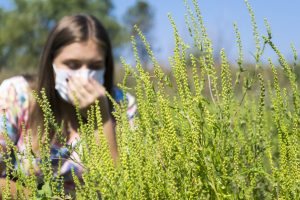
Manage Symptoms
Checking local pollen counts is helpful to anticipate the level of exposure on any given day. Pollen counts are determined by collecting pollen on special rods. The pollen is then counted under a microscope and calculated in grains per cubic meter of air. Pollen counts tend to be the highest early in the day, or often when the wind picks up just before a large rainstorm. If you like dancing in the fall rain, or jumping in rain puddles, however, you are in luck. During a rainstorm and immediately following, pollen becomes still and dormant because the rain makes it damp and heavy. As the air becomes warmer and drier following the storm, however, the pollen count will rise again.
Pollen Avoidance
Those with weed pollen allergies should try to avoid heavily dense wooded areas or those with brush and shrubbery. These areas should be especially avoided in late August when pollen is the most dense and abundant. Pollen counts are never zero, nor will an allergy sufferer truly be able to avoid weed pollen in the late summer and early fall. However, contact may be lessened by taking simple steps to avoid pollen overload:
- Utilizing the air conditioner or heater
- Keeping the windows and doors at home and in the car closed
- Utilizing the dryer rather than the fresh breeze to dry clothing
- Changing clothes after coming in from being outdoors
- Shower prior to getting into bed or laying on upholstered furniture
These easy steps will help to decrease pollen exposures. Also, one benefit COVID-19 may bring allergy sufferers, is that wearing of some masks will help to minimize the amount of pollen reaching the nasal passages if being worn in outdoor settings.
Get Tested
If someone is unsure whether weed pollen is a trigger for their back-to-school nasal congestion, runny nose, post nasal drip, sneezing, and itchy watery eyes, taking an allergy quiz or seeing their provider for an allergy test may provide the clarity they are looking for!
Amanda Hofmann, MPAS, PA-C, is a graduate of Duquesne University, in Pittsburgh, Pennsylvania. After spending eight years in clinical practice, she joined United Allergy Services as the vice president of clinical. Amanda is also the past president of the Association of PAs in Allergy, Asthma, and Immunology.
United Allergy Services is also on Facebook, LinkedIn, or Twitter. See other interesting and related articles on the UAS Blog.
Grass Pollen Allergy: Making the Most of Summer
Summer is finally here! Longer days, days spent by the beach or the pool, and late nights catching fireflies are on the horizon. Allergies are usually associated with the spring or fall because pollen is most active during these times. However, summer allergies, especially to grass, are also common. This grass pollen allergy can cause some of the same troublesome allergy symptoms as in other seasons.
Allergy Season
Grass begins to pollinate in the late spring, typically April or May in the northern part of the country. The pollination period in the north will then typically continue through June or July. However, in southern regions, grasses may pollinate throughout many seasons and could trigger symptoms throughout the year. These pollination time periods are when those who suffer from a grass pollen allergy notice their symptoms at their worst.
Types of Grass Pollen
There are hundreds of different kinds of grasses throughout the United States. Fortunately, not all of them are the source of summer sneezing, congestion, and itchy eyes. Some grass pollen types are small, light, dry and can travel for hundreds of miles by the wind. One group of grasses, referred to as the northern pasture grasses, cause more allergy problems than any others. These grasses include:
- common timothy grass
- sweet vernal grass
- orchard grass
- perennial rye grass
- Kentucky bluegrass
Another type of grass, bermuda, is a southern grass and is responsible for many troubling summer grass allergy symptoms. Johnson grass is another main culprit for grass pollen misery.
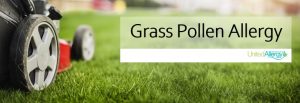
Options for Homeowners
While common Bermuda grass usually triggers allergies, some hybridized versions produce little to no pollen. One common type of hybrid Bermuda grass referred to as the "Princess 77" variety is available for homeowners. Other good hybrid Bermuda grass varieties include "Tifway" and "Santa Ana". Buffalo grass may be a good warmer climate option. This warm-season grass survives droughts and requires little supplemental watering, making it ideal for areas with watering restrictions. Types like the "UC Verde" or "609" produces only female plants, eliminating the problems of flowering and producing pollen. Although less commonly found, this is ideal for grass pollen sufferers.
Measuring Grass Pollen Counts
Those that suffer from a grass pollen allergy can benefit from checking their local pollen counts regularly. Pollen counts are determined collecting pollen on special rods. The pollen is then counted under a microscope. The pollen count is then calculated in grains per cubic meter of air. Pollen counts tend to be the highest early in the day, or often when the wind picks up just before a large rainstorm.
If you like dancing in the rain, or jumping in rain puddles, however, you are in luck. During a rainstorm and immediately following, pollen becomes still and dormant due to the rain making it damp and heavy. As the air becomes warm and dry following the storm, the pollen count will become potent again
Manage Your Grass Pollen Allergy
Pollen counts are never zero, nor will an allergy sufferer truly be able to avoid grass pollen in the summer. However, some practices may help decrease pollen exposures. For instance, utilizing the air conditioner while keeping the windows and doors to the home and car closed. Also, utilizing the dryer rather than the fresh breeze to dry clothing will help to decrease pollen exposures. It is especially important to keep windows closed when you or someone close mowing their grass.
Although it may seem like a good idea to avoid cutting the grass as much as possible, mowing grass often and keeping grass short actually causes the grass to release less pollen into the air. If a nonallergic friend or family member isn’t available to assist in cutting your grass, consider wearing a mask. Wearing masks will help to minimize the amount of pollen reaching the nasal passages. It is greatly beneficial for grass pollen sufferers to wear a mask when cutting grass or doing other yardwork.
Other Helpful Tips
Those with a grass pollen allergy should try to avoid heavily dense grassy areas, especially in early summer when pollen is the most dense and abundant. Although summer brings warmer temperatures. when you are out working in the yard, out at a park, or hiking it is recommended to wear long pants or long sleeve shirts in a light breathable fabric. This added layer of protection helps reduce the amount of pollen that comes in direct contact with your skin. Similarly, wearing sunglasses and hats also reduce pollen that contacts eyes or nestles in your hair.
Grass pollen allergy sufferers should also make a habit of changing their clothes after coming in from being outdoors, and bathing prior to getting into bed/laying on upholstered furniture. Wash bedding in very hot, sanitizing cycles once a week in peak pollen seasons. It is also beneficial to remove shoes before entering your home. And do not forget your pets! They can be major sources of tracking grass pollen into your home. Make sure to wipes them down with a wet cloth or towel before they enter your home, and make sure to bathe them more frequently in high pollen seasons. And although not always feasible, the ability to keep your pets from sleeping in your bed, in your bedroom, or on your upholstered furniture will also greatly benefit you if you suffer from grass pollen.
Symptom Relief is an Option
If someone is unsure whether grass pollen is a trigger for their troublesome nasal congestion, runny nose, postnasal drip, sneezing, and itchy watery eyes (take our allergy quiz here), seeing their provider for an allergy test may provide the clarity they are looking for!
Amanda Hofmann, MPAS, PA-C, is a graduate of Duquesne University, in Pittsburgh, Pennsylvania. After spending eight years in clinical practice, she joined United Allergy Services as the vice president of clinical. Amanda is also the past president of the Association of PAs in Allergy, Asthma, and Immunology.
United Allergy Services is also on Facebook, LinkedIn, or Twitter. See other interesting and related articles on the UAS Blog.
Independence from Summer Allergies
The Fourth of July is only one week away and that likely means many are making or finalizing plans to be outside. Are you planning to be the grill master? How about the fireworks expert? Maybe you are the ultimate host of the celebration surrounded by family and friends enjoying fireworks, picnics, swimming, and outdoor activities. Here are some of the most common summer allergy tips to for attending Fourth of July celebrations. After all, it is your right to have independence from summer allergies!
Number One Summer Allergy: Grass Pollen
During the summer months, many allergy sufferers are wary of grass pollen. They are the most common seasonal allergy triggers and are heaviest in May through August. Those that suffer from grass pollen allergies can benefit from checking their local pollen counts daily. Pollen counts tend to be the highest early in the day or as the wind picks up just before a large rainstorm.
Also, try to offer guests an indoor option during your outdoor celebration if possible. Try to offer a portion of the area where guests can sit away from tall/dense grass or shrubbery. Another options would be a non-grass surface like a deck or patio. To avoid bringing those pollens inside after a great celebration, take a shower or bath before hopping into bed. This will help rinse off any sticky allergens stuck to your body or hair before they stick to your bedding.
Summer Skin Allergy: Sunscreen Reactions
Many celebrations occur outside or around the pool, so sunscreen is important to discuss. While sunscreen is a crucial part of summer safety, sometimes it can cause a reaction much worse than a sunburn. A contact allergy to the sunscreen may present as a rash appearing where it was applied. Or it could be a reaction that appears after applying the sunblock and being exposed to the sun.
To avoid a sunscreen reaction, apply a quick and simple patch test before applying the product to your whole body. Decide on a small area, like the wrist, and apply the product. Wait at least 24 hours to make sure the skin does not react.
Summer Venom Allergy: Stinging Insects
Similar to sharing the festive star-spangled celebrations with pollen and sun, consider insects as well. We know stinging insects such as bees, wasps, hornets, and yellowjackets are most active during summer and early fall. Also, fire ants are active all year round in many southern parts of the United States.
For many of us stings and bites can be uncomfortable and painful. However, there are many picnic guests that have life-threatening reactions that can result from a sting or bite. People who know they are at risk should always carry two doses of auto injectable epinephrine. They should have the ability to access it within 60 seconds if necessary. Try to avoid the stings and bites before they occur by refraining from walking outdoors barefoot, especially in grassy areas. Another helpful trick is to skip perfume or sweet-smelling body sprays or lotions. Also, drinking from cans or bottles that have sat open and unattended should be avoided because sometimes insects can be an unpleasant surprise. Finally, when choosing the perfect outfit for the holiday weekend, leave your vivid, floral clothes in the closest.
Summer Asthma Concerns
When we think of the Fourth of July, firework displays lighting up the sky quickly come to mind. Fireworks, although beautiful and breathtaking, can create smoke and small particulate matter. This can trigger asthma for some, taking their breath away in a not so enjoyable way. If you suffer from asthma, consider watching the fireworks from an indoor location. Similar to fireworks, smoke from grills, bonfires, firepits, or outdoor fireplaces can also trigger asthma for some. Try to avoid the direct smoke pathway and leave significant distance between yourself and the source of the smoke.
Other scented products utilized during outdoor gatherings can also contribute to air pollution and can also trigger asthma. If hosting a party, it would be helpful to contact your guests and ask if certain things like scented insect repelling candles, scented tiki torch oil, odor hiding fragrances or air fresheners trigger any negative responses for them.
If there is a swimming pool, remember that while chlorine isn't an allergen, it is an irritant and can cause problems with eye and nose itching. It can also cause breathing problems in people with asthma. If undesired symptoms are occurring while swimming, jump out, take off your suit and washing the affected area with clean water and soap to remove traces of the remaining irritant. You should have a rescue inhaler on hand, if prescribed to you, to calm any respiratory symptoms should they occur.
Summer Food Allergy Considerations
Finally, what would a summer celebration be without all the tasty food and drinks? If food allergies are present, it can make attending picnics and barbeques easier to pack your own meals or snacks to have readily available. Preparing food, yourself is always the safest option, however, it may not be feasible may not allow you to feel you are enjoying all the perks of a summer celebration. It is helpful as a host to ask about any food allergies or dietary restrictions when inviting guests to the event. It is also very helpful to label what individual dishes or offers are and include a high-level recipe or ingredient list. That way guests can privately identify safe selections off the menu in and will allow them to enjoy immersing themselves in the full experience without the worry of unknown exposure.
Amanda Hofmann, MPAS, PA-C, is a graduate of Duquesne University, in Pittsburgh, Pennsylvania. After spending eight years in clinical practice, she joined United Allergy Services as the vice president of clinical. Amanda is also the past president of the Association of PAs in Allergy, Asthma, and Immunology.
United Allergy Services is also on Facebook, LinkedIn, or Twitter. See other interesting and related articles on the UAS Blog.
Easter with Allergies
The Easter and Passover holidays are here! Holidays mean family centered fun, festive meals, and usually sweet treats to enjoy. For allergy suffers, however, they can sometimes be challenging to navigate. Aside from the usual pollen and food allergies, brightly dyed eggs, household pets, and sweet baby chicks and bunnies can also wreak havoc on the nose and chest. Here are some tips to navigate the upcoming holidays and ensure that you and your family celebrate safe and happy.
Easter and Food Allergy Considerations
Traditional holiday meals are at the cornerstone of Easter and Passover. Plan the meals out in advance and be mindful of any guests that may have a food allergy. Be flexible and try to switch ingredients for allergy-friendly alternatives, eliminate a recipe from the menu altogether, or take care to prepare allergy-friendly dishes separately from the other meals. If you are not sure if guests have a food allergy, consider printing recipes out for each of the dishes and allow people to determine if it’s a safe food for them to indulge in. Also consider avoiding a buffet style offering, or separating allergen safe foods from allergen containing foods in two different areas or tables.
Sweet Treats
These spring holidays typically mean chocolate and sweet treats to younger members of the family, or those young at heart. Try to again consider those guest and family members that may have allergies to things like chocolate, so they are not left sitting on the sidelines. Allergy to chocolate itself, or the cacao bean, is incredibly rare, however more commonly the offenders are milk, peanuts, tree nuts, soy, and corn. A little research will provide an array of options of dairy free or peanut/tree nut free brands of treats. Always check labels to see if the offending food in contained in the ingredients list, or mentions it was produced in a facility that also processes other allergen containing foods putting your loved one at risk of cross contamination.
Keep in mind most chocolate does contain soy in the form of soy lecithin to keep it solid at room temperature, and white chocolate commonly contains corn in the form of corn syrup. If the treats offered are of the homemade variety, it can be even more challenging for a food allergy sufferer due to lack of label to research ingredients.
If you suffer from food allergies, a good rule to follow if “If you can’t read it, don’t eat it”. Plan to bring some of your own safe snack or goodies, unless you can make sure your host prepared foods allergen free, safely away from other allergen containing food, and on a separate and thoroughly cleaned surface. In lieu of store bought or homemade edible treats, consider offering nonfood items for younger guests such as books, sporting goods, stickers, novelty items, or toys.
Easter Egg Related Allergies
Although the majority of food allergens are most offensive if ingested, it is important to consider that some people do have reactions or develop irritations from contact exposure to egg or the dyes used to make them bold and bright. If colorful dyed egg hunts are part of your spring holiday tradition, there are alternative ways to include everyone on the fun. Instead of using traditional eggs and egg dye, consider eggs made of wood, ceramic, or plastic, and consider natural dye alternatives. Other options include making gelatin eggs, egg sugar cookies for decorating, or decorating marshmallows in place of eggs. Also, consider replacing the hard-boiled egg on the Passover Seder plate with a ceramic or plastic egg to keep guests anxiety free.
If the above-mentioned allergies are life threatening for you or a loved one, always make sure to carry a minimum of two epinephrine auto injectors if it is prescribed. Make sure the epinephrine autoinjector is carried in a way it can be accessed and administered within 60 seconds of a need arising. If you or a loved one does have life threatening allergies, it is always a good idea to check with your health insurance and ensure you know where to seek medical care should the need arise if celebrating the Spring holidays out of town.
Pollen Considerations
Food allergens typically are the easiest to keep front of mind during the holidays, however equally as difficult for allergy suffers and arguably more difficult to avoid are the tree pollens and mold spores blowing in the air. These unwanted guests can ruin any picnic or outdoor gathering with nasal, sinus, eye, and chest symptoms. If there is both indoor and outdoor venues at the celebration location, try to minimize the time spent outdoors. If you are hosting the celebration, try to offer an indoor haven if planning to spend time outdoors, as well as keep windows and doors closed at the indoor space. Also, minimize the exposure to outdoor allergens while traveling to the destination by keeping windows up in the car and instead using the air conditioning.
Celebration Times
It is a good habit to always check pollen counts for the area where you will be celebrating. If you are planning the celebration, try to have it start mid-day or later due to peak pollen times typically occurring in the first half of the day (specifically 5am 10am). Also, it would be beneficial to plan the event outside of heavily grassy areas or those densely populated with trees. This may help to decrease the concentration of allergens in the air. If the celebration will be entirely outdoors with no indoor refuge, it is a good idea to make sure you are on top of your allergy medication or immunotherapy regimen before going. It may be wise to pack a few changes of clothing as well as wet wipes for the ability to remove pollen from your immediate environment every few hours.
Once you return home from the festivities, plan to shower or bathe before prioritizing any other activities. It is especially important to bathe before crawling into bed, to remove any allergens that have adhered themselves to your skin or hair. This is especially important before allowing them to have access to your pillow or sheets and being in the immediate space and air you breath in all night.
Easter and Passover Gifts or Decor
Many people choose to show their appreciation to their host or show their love to their family by bringing beautiful spring flowers or plants to the celebration. Unfortunately, people can have severe symptoms such as sneezing, along with nose and eye itching and watering related to the pollen, or just the smell of particular flowers. Even an asthma attack can be triggered from them. According to the American College of Allergy, Asthma and Immunology, there are many flowers you can get at a florist that produce little pollen. Look for tulips, roses, begonia, columbine, crocus, daffodil, and geraniums if you want to be safe.
Pet Allergies
We cannot forget about the cherished furry family members that may be in attendance for the spring holiday celebration. There may also be the propensity to give the give of baby chicks or bunnies this time of year. Dander, saliva, sweat, and urine from adorable dogs, cats, and even bunnies can trigger an allergic response in some people. If possible, try to keep pets confirmed to only a certain area of the celebration so that those that wish to enjoy them can, while those that are unable can find refuge elsewhere.
Make sure to thoroughly wash your hands before returning to an animal free area of the celebration, before partaking in shared food items, or before touching your face, mouth, or eyes. Also, make sure the recipient of a new spring pet is not triggered by them. Although recent literature has shown us a true allergy to bird feathers is rare, there are substantial amounts of dust mites found in feathers that can trigger unwanted allergy symptoms.
Allergy Treatment Options
If you or a loved are unsure whether tree pollen, grass pollen, mold spores, dust mites, or animal dander are potential allergy triggers and the cause of the nasal congestion, runny nose, post nasal drip, sneezing, and itchy watery eyes you have been suffering with, seeing your provider for an allergy test may provide the clarity they are looking for! Some providers may have the ability to access food concerns as well. And if you are already aware of true allergy triggers, but the spring allergy medication and avoidance measures are just not cutting it, there is still time to see your provider and discuss starting allergen immunotherapy.
Amanda Hofmann, MPAS, PA-C, is a graduate of Duquesne University, in Pittsburgh, Pennsylvania. After spending eight years in clinical practice, she joined United Allergy Services as the vice president of clinical. Amanda is also the past president of the Association of PAs in Allergy, Asthma, and Immunology.
United Allergy Services is also on Facebook, LinkedIn, or Twitter. See other interesting and related articles on the UAS Blog.
Tips for Balancing Baseball and Allergies
Spring means longer days, warmer weather, and the beginnings of baseball! Unfortunately for some allergy sufferers, the start of the long-anticipated baseball season also means the time of year when allergens such as tree pollen are at an all-time high. Sneezing, wheezing, and itchy, watery eyes can make games or practice challenging for you or your little leaguer. Even more concerning? The thought of major league games and contact with baseball’s favorite sidekick...peanuts! You can still enjoy this spring and baseball season with a little planning for your allergies.
Eliminating all outdoor sports and activities may seem like the best decision, and for many, it is. However, if skipping out on baseball or other outdoor sports due to allergies just is not an option, we can help. Here are some tips that will help allergy suffers enjoy watching America’s pastime and PLAY BALL!
Airborne Allergy Tips
Check the weather forecast before heading to the game. When checking out the weather, it is good practice to also check the pollen counts in the area. Keep in mind that peak pollen times are typically in the first half of the day, specifically 5am 10am. Attending practices or games midday or in the afternoon may help to reduce exposures.
Baseball and outdoor allergies don't have to be in competition with one another. If you have a little leaguer, packing wet wipes is good practice. Wiping down their hands, face and neck can be helpful to combat those distracting allergy symptoms when out on the diamond. Also, make sure your favorite player is not relying on allergy medication that could make them drowsy. There are non-sedating medication options, or allergen immunotherapy that are worth discussing with their provider.
After a long practice or game, it is beneficial to change your clothing as soon as possible. Also helpful is an immediate shower, especially before crawling into bed. The shower will help to wash away any allergens that have adhered themselves to your skin or hair. This is especially important so that the allergens aren't transferred to your pillow or sheets, remaining in the immediate space you breathe in all night.
Planning for Stinging Insects and Food Allergies
If your allergies include stinging insects or even food, planning ahead can alleviate a lot of anxiety. Always make sure to carry a minimum of two epinephrine auto injectors if there is a known insect or food allergy. Make sure the epinephrine auto injectors can be accessed and administered within 60 seconds if the need arises.
If food allergies are present, especially peanut, legume, or tree nut, it can make the lyrics “Buy me some peanuts and Cracker Jacks” send shivers down your spine. Fortunately, most large baseball stadiums across the country have become aware of the dangers and distress surrounding food allergies and have started to offer peanut-free games or special accommodations for food allergy families with peanut-free designated seating. The Food Allergy Research and Education (FARE) organization typically releases an annual guide outlining which major league and minor league baseball stadiums offer peanut aware sporting events. Along with utilizing their helpful guide, FARE recommends “to reach out directly to the venue to learn more about their efforts”.
Some suggested questions to have ready when you contact the venue about are:
- Are there any [peanut] allergy friendly games, sections, or suites available?
- Does the venue utilize power washing for seating, and traffic pathways at the stadium?
- Can you find ingredient lists or are they available upon request at the concessions?
- Do they allow families to bring in their own safe meals and snacks?
- Are emergency responders available to the public at every game, and are their sections closer to these personnel?
Planning and communication are key to enjoying baseball season and balancing your outdoor allergies. Talk to family, friends, coaches, players, and venues, to create a plan that is right for your family. However, missing out on baseball season does not have to be part of that plan. If you or your loved ones are not quite sure if allergies are playing a role, or if the over-the-counter allergy medication just is not cutting it, you have options. There is still time to see your provider and discuss allergy testing and begin allergen immunotherapy.
About the Author
Amanda Hofmann, MPAS, PA-C, is a graduate of Duquesne University, in Pittsburgh, Pennsylvania. After spending eight years in clinical practice, she joined United Allergy Services as the vice president of clinical. Amanda is also the past president of the Association of PAs in Allergy, Asthma, and Immunology.
United Allergy Services is also on Facebook, LinkedIn, or Twitter. See other interesting and related articles on the UAS Blog.
Valentine's Day Allergy Offenders
Valentine's Day can be intimidating for allergy suffers. Far too frequently sweethearts visit the emergency room instead of their favorite restaurant or fill the day with sneezes instead of smooches. Avoiding the most common Valentine’s Day allergy offenders is possible, and here are some tips to keep everyone safe.
The Nose Knows
Flowers on Valentine's Day is a classic way to show your love. Unfortunately, flower pollen can trigger severe symptoms such as sneezing, itchy nose, and itchy/watery eyes or even asthma attacks. Luckily for the lovers out there, according to the American College of Allergy, Asthma and Immunology, there are many flowers options that produce little pollen and still set the mood. Look for tulips, roses, begonia, columbine, crocus, daffodil and geraniums for your allergy suffering sweetheart.
Before we check the box for being safe in the scent department, consider other smell related concerns. It’s important to know physical symptoms such as headaches and sneezing can be triggered from just the smell of some flowers. Often, these symptoms can also be related to perfume or cologne as well. Although these reactions are not actually a true allergy, and instead are generally a reaction to odors created by volatile organic compounds, they can cause a Valentine's Day disaster.
Food Allergy Offenders
Also on the list of iconic Valentine’s Day allergy offenders is that delectable box of chocolates. Allergy to chocolate is rare, but most chocolate is made with milk, and many of the chocolate assortments contain tree nuts, peanuts, eggs, and other more common food allergens. Read all food labels to stay safe and be sure to take note of label warnings such as, “May contain” or “Processed in a facility”. If these warnings pertain to you, your Valentine’s Day may be sweeter without it.
If you or your Valentine have any food allergies, of course, be sure to carry your epinephrine autoinjector at all times. It’s always the most important accessory you can have! Here’s another helpful hint if food allergies are on the table; Protect your Valentine by calling ahead to that romantic restaurant to discuss the food allergy before you go. Make sure the kitchen and chef can be accommodating on a busy night like Valentine’s Day. Better yet, you might get extra points in the Cupid category if you roll up your sleeves and prepare all your Valentine’s favorites yourself. Added bonus? You won’t have to worry about finding the perfect facemask to match your outfit this year!
Gifts That Don't Keep Giving
If your Valentine has their heart set on jewelry, keep in mind that it can contain varying amounts of nickel. A contact allergy to nickel can lead to symptoms such as severe itching, blisters, and rash in the area where the jewelry touches the skin. Unlike allergy to flowers and foods, a reaction to a metal may take several days to develop after exposure. If baubles and jewels are the burning desire of your Valentine, however, don’t worry! Sticking to jewelry made with stainless steel, copper, platinum and 24 karat gold is usually a safe choice.
Finally, consider skipping the stuffed animals this year. The bigger the teddy bear, unfortunately, can mean the bigger the dust mite population that it ends up harboring. These mites are one of the most common causes of allergies and can be found in any fabric item. Much like pollen, they can bring on sneezing and other nasal symptoms, and even result in asthma flareups. Keep the temptation for the plush gifts away and make your Valentine your main squeeze instead!
See more news and insights from United Allergy Services on Facebook, LinkedIn, or Twitter.
'Tis the season for Cedar Fever
In parts of Texas and surrounding areas, cedar allergies are one last health challenge in an already difficult year.
2020 has been one for the ages, headlined by the widespread impact of the COVID pandemic. While Americans and the rest of the world await a vaccine, there are other concerns that can impact their health in the coming months. One of those is cedar allergies.
Winter is generally not considered a peak season for environmental allergies. Grasses pollenate in the summer months, ragweed pollenates in the fall, and most trees release their pollen in the spring months. However, one tree that does so between December and February is mountain cedar. According to Thermo Scientific, cedar is one of the primary allergens in Texas, especially around the Edwards Aquifer region. It can also be found in parts of southern Arkansas and Oklahoma.
Cedar is identifiable by its amber-colored pollen, which becomes ubiquitous from December through February. Its effect, often known locally as “cedar fever”, can lead to symptoms like itchy, stuffy, and runny nose, as well as sneezing and itchy and watery eyes for allergy sufferers. In more serious cases, it can lead to sinus infections or trigger allergic asthma symptoms.
In a climate where people are already hyper-conscious of their breathing symptoms, cedar allergies cause additional stress. Could that congestion and coughing be allergies, or something worse? Providers that offer allergy testing can not only offer their patients short-term peace of mind but a path to long-term relief from the symptoms that bother their patients, now and year-round.
While many allergy sufferers will practice a combination of avoidance and self-medication to get through cedar season, those are only short-term measures to combat the symptoms rather than the disease. Allergen immunotherapy represents a path to a long-term better quality of life, including during cedar season. With concerns such as the flu and COVID existing simultaneously, patients have all the more reason to seek understanding--and relief.

